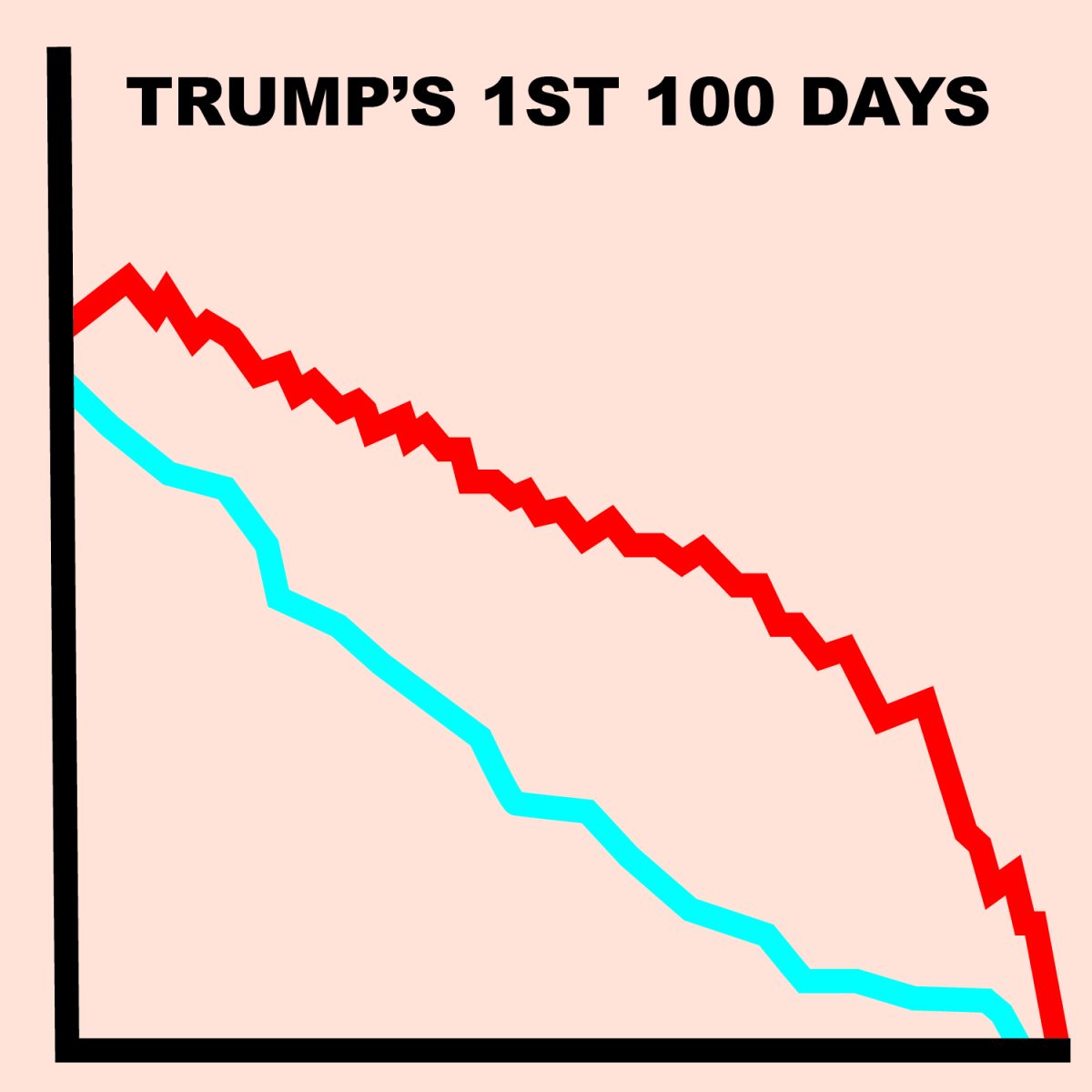Donald Trump passed the 100-day mark of his second term on April 27, and it is proving to be a tumultuous time. Campaigning once again on his “America First” agenda, Trump is following through aggressively, often to the detriment of longstanding diplomatic relationships and global stability.
He has publicly clashed with longtime allies such as Canada and the United Kingdom, while showing increased alignment with adversaries like Russia. One major consequence has been the growing instability surrounding the war in Ukraine. Trump has halted funding for Ukrainian defense efforts after a heated dispute with Ukrainian President Volodymyr Zelenskyy near the start. He has also renewed tensions with China and his interest in “getting” Greenland has caused more global unrest.
“What we’re seeing is a huge disruption in world affairs,” said Dennis Ross, a former Middle East negotiator who served under both Democratic and Republican administrations. “No one is certain at this point what to make of what’s happening or what will come next.”
Adding to the instability is Trump’s renewed push for tariffs and trade wars. Although economic frustration helped fuel his election, many experts believe his latest actions are making things worse. His sweeping tariff policies have caused financial markets to swing wildly, weakening the U.S. dollar and prompting warnings of a global economic slowdown making it more of a risk for another recession.
Domestically, Trump has launched aggressive reforms that are shaking American institutions. He has waged battles with schools, universities and the media as well as other institutions. By appointing Elon Musk to lead a cost-cutting effort, the administration has slashed or delayed funding for essential public services. Schools are experiencing budget cuts, employees are being laid off and critical programs are stalling, all before the full effects of tariffs hit Americans’ savings and cost of living.
Most controversially, Trump has doubled down on immigration. His administration has embarked on a sweeping program of mass deportations, enlisting agencies like the IRS to help remove undocumented immigrants. Some have been deported without due process under a rarely-used wartime provision from the 18th century. Foreign students have been detained and stripped of their visas for speech the administration disapproved of, and in a shocking move, Trump even threatened to send U.S. citizens to a notorious prison in El Salvador. All these actions are defying the Constitution and Supreme Court rulings. Yet Trump shows little concern.
While the Republican Party continues to back him, public opinion is shifting. Recent polling from Pew Research shows Trump’s approval rating slipping to 40%, lower at this point in his term than any recent president. Many Americans say they now fear their own government. Protests, boycotts and widespread public outcry reflect growing discontent.
Yet, Washington appears paralyzed. Democrats remain disorganized and slow to respond, while Republicans continue to stand by Trump. With tensions high and public frustration growing, all eyes are now on the upcoming midterm elections which could determine the future direction of the country.




